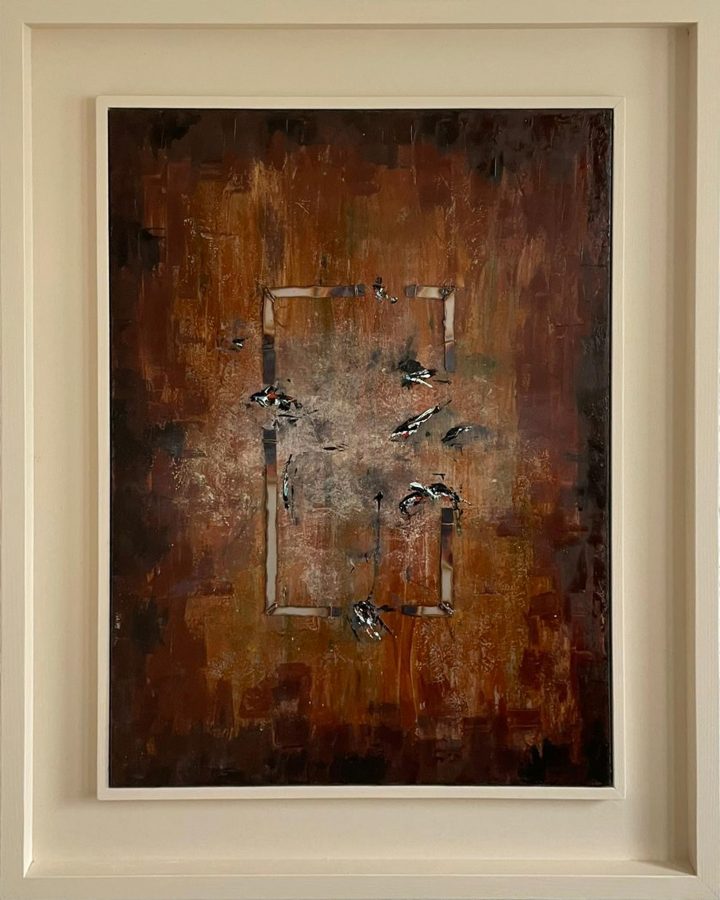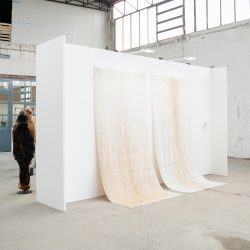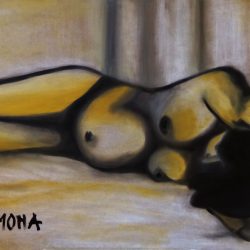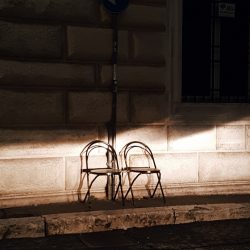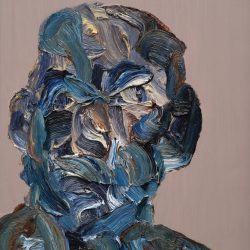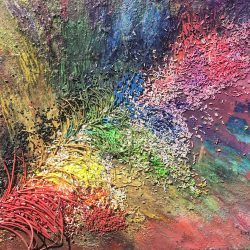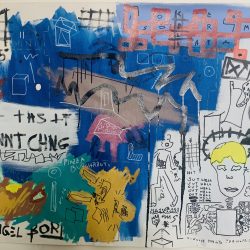work
Where silence hesitates
| category | Painting |
| subject | Architecture, Abstract, Human figure |
| tags | architettura, interiorità, gabbia, varco, metallo, acciaio, scuro, marrone, nero, terra, pelle, dentro di noi, architecture, interiority, cage, metal, steel, shades, black, brown, skin, inside us |
| base | 60 cm |
| height | 80 cm |
| depth | 2 cm |
| year | 2025 |
oil, tempera, steel on canvas
Painting becomes an opening; matter becomes symbol.
At the center of the composition, the rectangular steel—cold and sharp—stands as a mental cage: a closed, rationalized space, built according to logics foreign to the individual. It is not a real prison, but an inner architecture, invisible yet powerfully present.
It represents a condition of our time: social alienation, the sense of inadequacy, the distancing from oneself and from others.
Yet this cage is no longer intact. Something has cracked it, broken it open. The rupture is not violent, but precise: the result of a conscious gesture, a silent yet determined form of resistance. And it is within this fracture that the heart of the work emerges: where order breaks, life begins to breathe again.
To tear the cage means to reclaim inner space, to recover the possibility of existing beyond imposed boundaries.
The dense, tactile oil background—built through chromatic layers shifting between rusty browns and deep blacks—evokes a compromised emotional landscape: corrosion, time, memory. But from this oxidized ground also rises a tension toward an escape route, a desire for truth and for the reclaiming of identity.
The work becomes an invitation to look beyond superstructures, to explore the cracks, to recognize in the signs of rupture the first step toward freedom. It is a visual reflection on the urgency of breaking internalized automatisms, of recognizing the invisible cages that inhabit us and, ultimately, of shattering them.
The work does not narrate; it suggests. It does not impose a reading, but opens a dialogue: with the viewer, with their story, with their prisons. In this sense, the work is not merely an image: it is an act of liberation.
Painting becomes an opening; matter becomes symbol.
At the center of the composition, the rectangular steel—cold and sharp—stands as a mental cage: a closed, rationalized space, built according to logics foreign to the individual. It is not a real prison, but an inner architecture, invisible yet powerfully present.
It represents a condition of our time: social alienation, the sense of inadequacy, the distancing from oneself and from others.
Yet this cage is no longer intact. Something has cracked it, broken it open. The rupture is not violent, but precise: the result of a conscious gesture, a silent yet determined form of resistance. And it is within this fracture that the heart of the work emerges: where order breaks, life begins to breathe again.
To tear the cage means to reclaim inner space, to recover the possibility of existing beyond imposed boundaries.
The dense, tactile oil background—built through chromatic layers shifting between rusty browns and deep blacks—evokes a compromised emotional landscape: corrosion, time, memory. But from this oxidized ground also rises a tension toward an escape route, a desire for truth and for the reclaiming of identity.
The work becomes an invitation to look beyond superstructures, to explore the cracks, to recognize in the signs of rupture the first step toward freedom. It is a visual reflection on the urgency of breaking internalized automatisms, of recognizing the invisible cages that inhabit us and, ultimately, of shattering them.
The work does not narrate; it suggests. It does not impose a reading, but opens a dialogue: with the viewer, with their story, with their prisons. In this sense, the work is not merely an image: it is an act of liberation.



